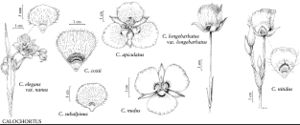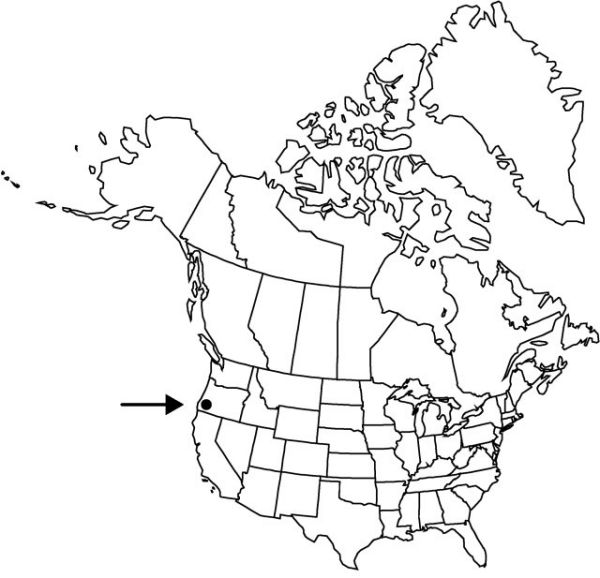Difference between revisions of "Calochortus coxii"
Phytologia 65: 216, fig.1g–k. 1988.
FNA>Volume Importer |
FNA>Volume Importer |
(No difference)
| |
Revision as of 19:30, 24 September 2019
Stems usually not branching, straight to flexuous, often scapelike, 15–25 cm. Leaves: basal ± erect, to 3 dm × 3–7 mm; blade with adaxial surface densely hairy, abaxial surface glabrous, shiny. Inflorescences erect, 1–7-flowered; bracts 1–several, 2.5–3 cm. Flowers erect; perianth open, campanulate; sepals ovate-acuminate, 20 × 8 mm; petals white, with reddish striations from base to gland and broad lavender chevron just distal to gland margins, broadly obovate, 2.5 cm, adaxial surface densely hairy, margins slightly ciliate; glands transversely oblong-lunate, deeply depressed, green at adaxial base, 1/2 to nearly equaling petal claw width, surrounded by yellow hairs that grade to white at petal apex, covered with membranous scales, scales covered with very small, translucent, rodlike hairs; filaments 7 mm; anthers reddish brown, 3–7 mm, apex apiculate. Capsules nodding, 3-winged, ellipsoid-elongate, 3–4 cm. Seeds light beige, surface rough.
Phenology: Flowering mid summer.
Habitat: North-facing open grassy slopes or woods, on serpentine
Elevation: 200–1000 m
Discussion
Of conservation concern.
Calochortus coxii is endemic to Douglas County from near the Umpqua River to Myrtle Creek Mountain.
Selected References
None.

